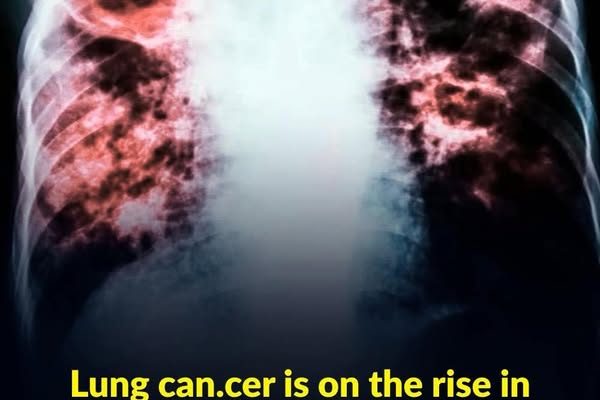Lung cancer has long been associated with smoking, but an alarming trend has emerged: a growing number of individuals who have never smoked are being diagnosed with this disease. This shift challenges traditional perceptions and underscores the need to explore other contributing factors.
The Rising Incidence Among Non-SmokersWikipedia+6The Irish Sun+6Yale Medicine+6
Recent studies indicate a significant increase in lung cancer cases among non-smokers. According to the World Health Organization’s International Agency for Research on Cancer (IARC), lung cancer is now the fifth leading cause of cancer deaths globally, with a notable rise in adenocarcinoma cases among non-smokers.
Unveiling the Hidden Culprits
Several factors contribute to the development of lung cancer in non-smokers:
1. Air Pollution: Exposure to fine particulate matter (PM2.5) from vehicle emissions, industrial processes, and other sources has been linked to lung cancer. These particles can penetrate deep into the lungs, causing inflammation and DNA damage.
2. Radon Gas: This naturally occurring radioactive gas can accumulate in homes, especially in basements and lower levels. Long-term exposure to high radon levels is the second leading cause of lung cancer in non-smokers.
3. Secondhand Smoke: Inhaling smoke from others’ cigarettes increases the risk of lung cancer. Even brief exposures can be harmful, especially in enclosed spaces.
4. Occupational Hazards: Exposure to carcinogens like asbestos, diesel exhaust, and certain chemicals in workplaces can elevate lung cancer risk.
5. Genetic Factors: Some individuals may inherit genetic mutations that predispose them to lung cancer, even without exposure to known risk factors.
Recognizing the Symptoms
Lung cancer symptoms in non-smokers can be subtle and easily mistaken for other conditions. Common signs include:
- Persistent cough
- Shortness of breath
- Chest pain
- Unexplained weight loss
- Fatigue
Early detection is crucial, so it’s essential to consult a healthcare professional if these symptoms persist.
Prevention and Mitigation Strategies
While not all risk factors are controllable, certain measures can reduce the likelihood of developing lung cancer:
- Test for Radon: Regularly check your home for radon levels and implement mitigation systems if necessary.
- Avoid Secondhand Smoke: Ensure smoke-free environments at home and work.
- Use Protective Equipment: If exposed to hazardous substances at work, wear appropriate protective gear.
- Maintain Indoor Air Quality: Use air purifiers and ensure proper ventilation to reduce indoor pollutants.
Advocating for Awareness and Research
The increasing incidence of lung cancer among non-smokers highlights the need for broader public health initiatives. Raising awareness about non-smoking-related risk factors and investing in research can lead to better prevention, early detection, and treatment strategies.
Understanding that lung cancer is not exclusive to smokers is vital. By recognizing the risks and taking proactive steps, we can work towards reducing the impact of this disease on non-smokers.




